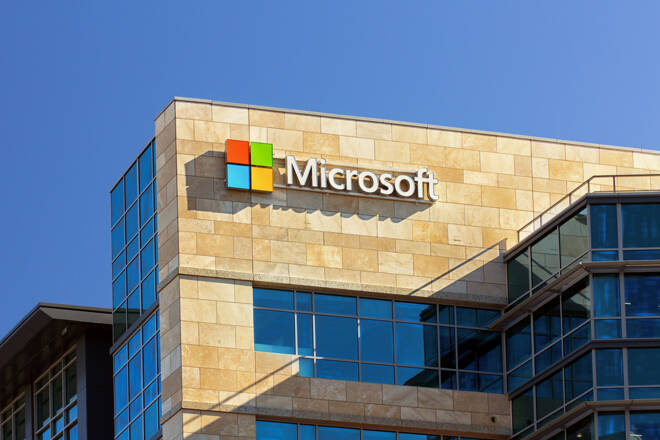Advertisement
Advertisement
HACK: Massive Opportunity Going Into 2022
By:
HACK’s holdings should profit as part of the broader cyber security industry over the next ten years as the market size which was $183.34 billion in 2020 reaches $539.78 billion in 2030.
When you compare the performance of cyber security ETFs to their technology heavyweights like Invesco QQQ ETF (QQQ) or the Technology Select Sector SPDR ETF (XLK), it becomes evident that Wall Street is probably underestimating the potential of the cybersecurity industry in 2022. For the sake of this comparison, I considered the ETFMG Prime Cyber Security ETF (HACK) and iShares Cybersecurity and Tech ETF (IHAK) as shown below, but there are others too.
Source: tradingview
The above charts show that both the two cybersecurity ETFs have underperformed their technology peers by more than 20%, despite holding stocks that are active in the fight against network malware and computer viruses, similarly to biotechs like BioNTech (NASDAQ:BNTX) and Moderna (NASDAQ:MRNA) producing cures to address the coronavirus threat.
Now, antivirus companies have been around for years, even decades, but the problem is that the threat level has increased exponentially as from the end of 2020 when Microsoft’s (NASDAQ:MSFT) was hacked through the supply chains attack when hackers made use of SolarWinds(SWI)monitoring software. Moreover, as shown by the high degree of sophistication of the recent ransomware attacks impacting colonial pipeline where millions of dollars of ransom money had to be paid to attackers, there is the involvement of bad actors at the nation-state level.
This is synonymous with aggression against the U.S., thus prompting the Biden administration to come up with a Cybersecurity executive order in May literally “forcing” federal agencies to boost IT defenses. As a result, public institutions have started to increase related expenses.
As for private institutions, they are also at a higher degree of risk due to the rapid adoption of the cloud, with workloads now also residing on employees’ laptops at home, making them more vulnerable to hacking as they are less protected by centralized corporate firewalls. Hence, there are multiple threat vectors facing CIOs, with many large enterprises reassessing their approach to cybersecurity altogether.
Hence relative underperformance in 2021 and an escalated threat landscape have created a massive opportunity for well-positioned cyber security vendors with the right products and proposition. For this matter, companies that come to mind are Cisco (NASDAQ: CSCO), Palo Alto (NASDAQ:PANW), and Fortinet (NASDAQ:FTNT), with their sophisticated zero trust protection (“ZTP”) mechanism. ZTP, in a way, resolves the problem which cannot be solved by the more traditional perimeter fencing security where the corporation is protected assuming it to be functioning within four walls. This is far from being the case in the current decentralized/WFH environment. Exploring further, HACK holdings also include companies that provide IT security for a wide variety of purposes including desktop as well as their web infrastructures.
Source: etfmg.com
Thinking aloud, unless you are prepared to invest in these individual stocks which implies tracking their performance on a regular basis, HACK provides you with the ability to invest in more than one, namely through an ETF. Another advantage is that it tracks the Prime Cyber Defense Index (PCYBERNR), which provides a benchmark for investors interested in tracking companies actively involved in providing cyber security technology and services. Its holdings also include companies involved in security protocols applied to private and public networks and mobile devices in order to provide integrity of data protection.
Along the same lines, the fund managers review holdings on a quarterly basis for eligibility purposes, with the weights (percentage of assets occupied by a holding) being reset accordingly.
Finally, nearly two years after the advent of Covid, many companies are still in the process of transforming their operations to optimize on the cloud paradigm and should subsequently increasingly focus on the security aspect as a lesser portion of IT workloads remains in corporate datacenters. For this purpose, HACK’s holdings should profit as part of the broader cyber security industry over the next ten years as the market size which was $183.34 billion in 2020 reaches $539.78 billion in 2030.
Calculating a target share price for the end of 2022, based on an appreciation of just 20%, HACK should reach $73.5-$74. This uptrend should however witness a lot of volatility as most cybersecurity names are considered as growth stocks and should be adversely impacted as inflation pressures continue to prevail in the first half of 2022.
About the Author
Chetan Wooduncontributor
Chetan Woodun has a Masters in Information Management and a Post Graduate Diploma in Business Management and Industrial Administration. He is certificated in Cloud, AI, Blockchain, IoT, Equity Finance, Datacenter and Project Leadership.
Advertisement
